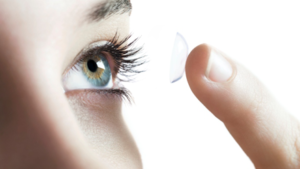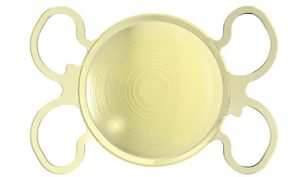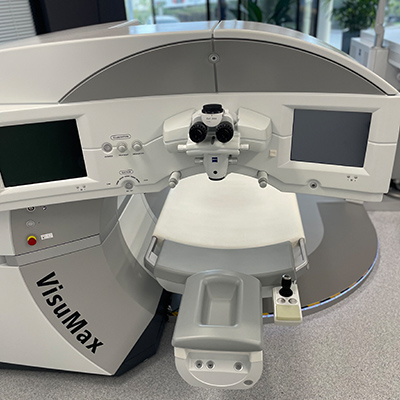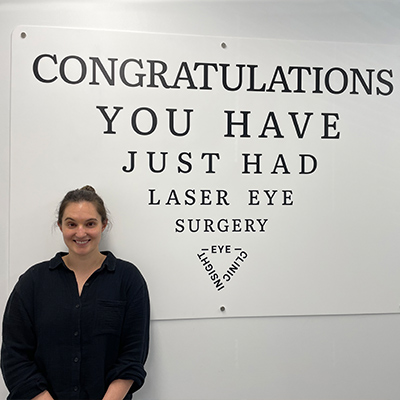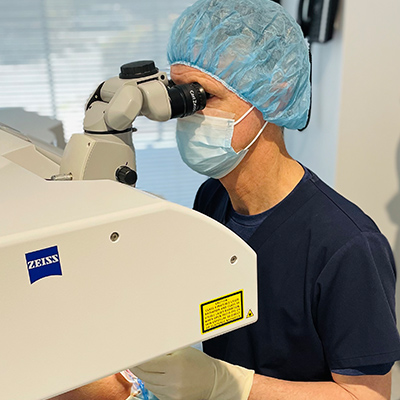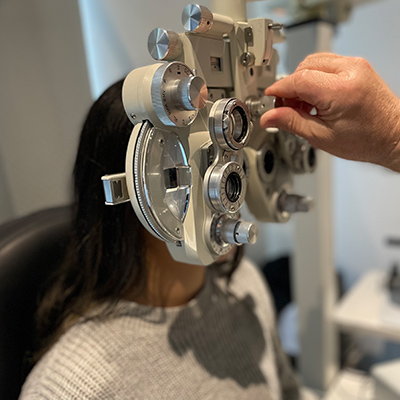MonoVision – Who Does it Suit & What Does it Mean?
What does the term ‘monovision’ mean?

Monovision involves your Ophthalmologist correcting your dominant eye for distance vision and your non-dominant eye for near vision. Eye dominance is easily assessed during a consultation. The two eyes then work together (binocularly) to create a blend between them, whereby; the eye that is dominant for whatever task you are performing (driving / reading / cooking / reading your phone) allows clear vision.
A monovision outcome using RLE (refractive lens exchange) or from cataract surgery means that you will experience freedom from glasses. Some patients require their vision to be fine tuned for certain things such as needle work, driving, shooting, reading very small print, 4D experiences etc. In these instances, Dr Furness recommends using ‘top-up’ glasses to bring both eyes to whatever focal depth it is that you require.
How does Dr Furness know that it will suit you?
Dr Furness will take into consideration your prescription + eye health, your most commonly performed daily tasks and the artificial lens type to ensure the best possible vision for you. These are just a few aspects to consider when assessing suitability for a monovision lens replacement procedure.
Monovision is not for everyone. Approximately 20% of people’s brains cannot tolerate the difference in vision between the two eyes. As a part of the suitability assessment process, we often perform a contact lens trial to loosely simulate post-operative vision for monovision. This is done on a separate date after the initial Doctor consultation.
Intolerance is usually apparent immediately once the contact lens(es) have been inserted. In some cases, intolerance is not apparent until the patient has experienced monovision at night time. They may have an increased sensitivity to light, experiencing substantial glare and halo’s deeming them not suitable for this visual outcome.
What does a contact lens trial consist of?
Your eye health care professional will fit a contact lens into either just one or both eyes depending on your current vision and desired visual outcome.
If you have previously worn contact lenses and are comfortable putting them in yourself, you can also do this. We recommend you trial the lenses during the day and into the evening as night vision can be effected by monovision, with some patients experiencing a higher level of glare or starbursts from artificial light. This is most prominent when driving at night. It is recommended that you go about your usual daily tasks and anything extra you feel pertinent to the outcome you desire.
If you have not worn contact lenses before, training on how to remove the contact lens(es) will be given during your fitting appointment.
You will also be provided with a video link and information sheet on how to safely remove them. Rest assured that removal is usually very simple and you can contact the out of hours service should you experience any difficulty.
Your honest feedback is important!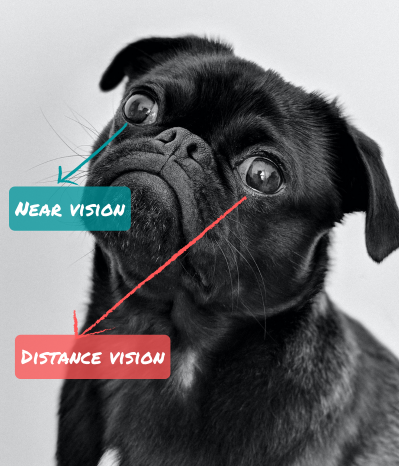
You will be asked to complete a questionnaire detailing your response to different factors such as your distance vision during the day and at night, your near vision during the day and night and your intermediate vision during the day and night. You will be asked to rate your vision from 1 to 10 for various tasks and make any comments you feel necessary.
Your Ophthalmologist will assess your questionnaire and confirm if monovision is a suitable visual outcome for you based on your visual quality scores and accompanying assessment results.
Is the contact lens trial a perfect simulation of post-operative vision?
⊗ No. It is impossible to create a perfect simulation of post-operative vision although we endeavour to create as accurate a simulation as possible. Cataract patients in particular who have reduced vision caused by the diseased lens will not experience a true simulation of post-operative vision. The contact lens trial in this instance, is simply to determine eye dominance and whether or not an increased sensitivity to light at night will prove problematic.
Overall, the contact lens trial is a good simulation of post-operative vision but the reasons for requiring the contact lens trial go beyond demonstration for the patient. It assists in data gathering for your Ophthalmologist.
What if you cannot tolerate monovision? What are your options?
Thankfully, there are other types of visual outcomes that may better suit your needs.
Trifocals
Distance vision only



